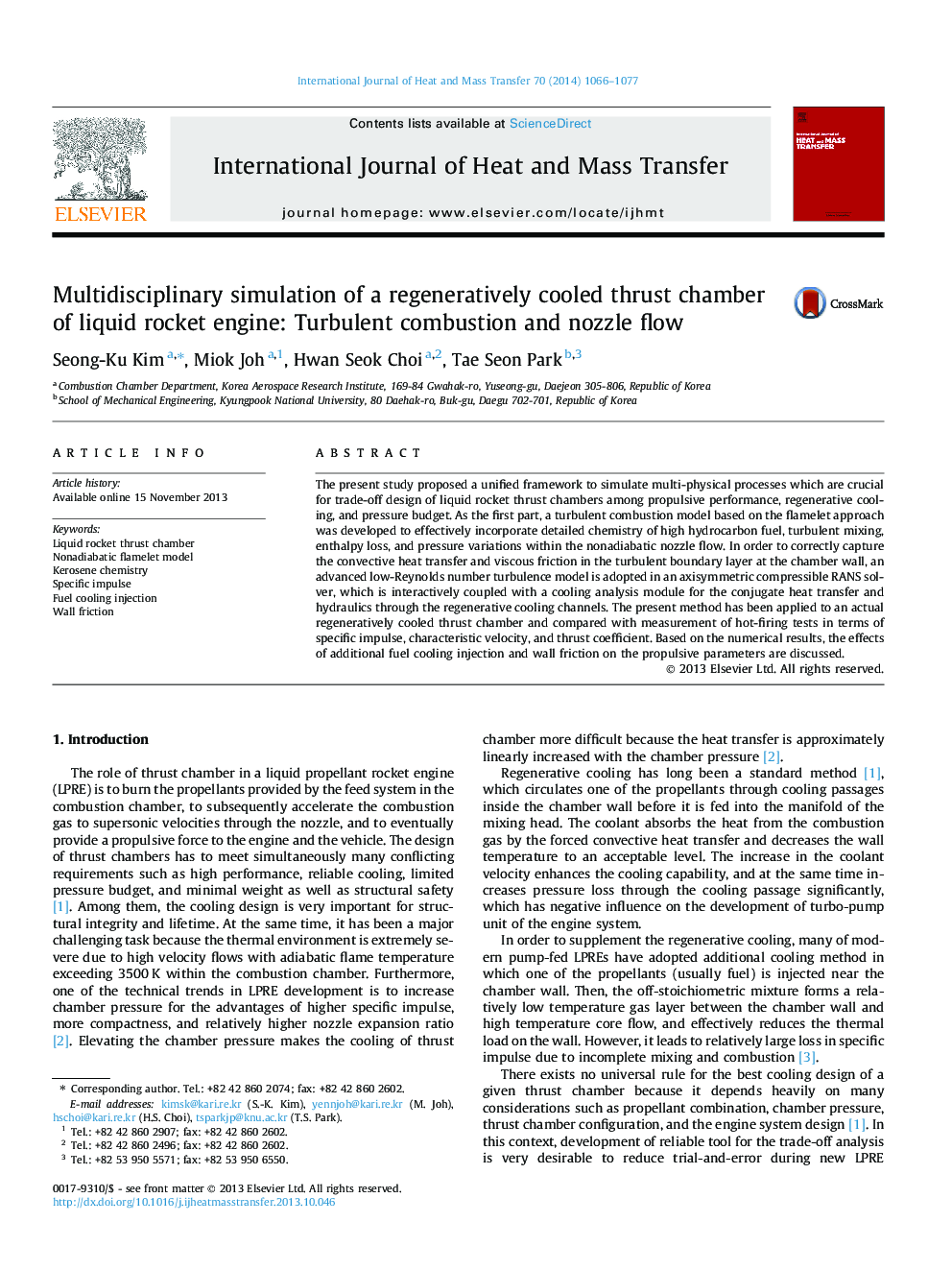| Article ID | Journal | Published Year | Pages | File Type |
|---|---|---|---|---|
| 657664 | International Journal of Heat and Mass Transfer | 2014 | 12 Pages |
The present study proposed a unified framework to simulate multi-physical processes which are crucial for trade-off design of liquid rocket thrust chambers among propulsive performance, regenerative cooling, and pressure budget. As the first part, a turbulent combustion model based on the flamelet approach was developed to effectively incorporate detailed chemistry of high hydrocarbon fuel, turbulent mixing, enthalpy loss, and pressure variations within the nonadiabatic nozzle flow. In order to correctly capture the convective heat transfer and viscous friction in the turbulent boundary layer at the chamber wall, an advanced low-Reynolds number turbulence model is adopted in an axisymmetric compressible RANS solver, which is interactively coupled with a cooling analysis module for the conjugate heat transfer and hydraulics through the regenerative cooling channels. The present method has been applied to an actual regeneratively cooled thrust chamber and compared with measurement of hot-firing tests in terms of specific impulse, characteristic velocity, and thrust coefficient. Based on the numerical results, the effects of additional fuel cooling injection and wall friction on the propulsive parameters are discussed.
